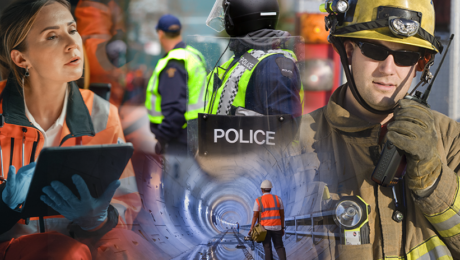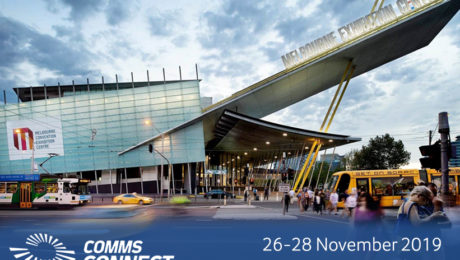The need for Unified Mobile Communications in diverse geographic workspaces
Businesses are demanding that the information needed to analyse and monitor elements within their industries, are delivered in real-time. Many mobile units, such as vehicles rely on separate network connections to move information from disparate systems sources. The result is a mobile units often maintain a variety of data sources across multiple cellular networks. This makes for very expensive connectivity in a single unit and may discourage organisations from collating more information which, in turn, leads to a better informed and more agile business decisions. The need for a unified hub that aggregates and manages the data and that can in turn be centrally configured and managed remotely in real-time is an interesting and compelling story.
- Published in Internet of Things
Simoco launches Velocity an integrated IoT platform with edge computing designed to bring customers high speed broadband Internet connectivity and convergence
Simoco Wireless Solutions, a leading mission critical communications manufacturer have recently announced the launch of Velocity providing customers an all in one intelligent communications platform. Velocity gives organisations a dedicated platform for managing mission critical voice and data communications and is suitable for an array of markets including but not limited to utilities and mining, transportation and cash and valuables in transit, public safety and government.
- Published in Internet of Things
Top technology trends for the critical communications industry: what does 2020 hold?
As we kick start another year and new decade, technology is advancing and accelerating at a phenomenal growth. This technology growth and change is likely to continue for the next decade and beyond. In this blog we take a look at what new technology trends will steal the limelight in the critical communications industry.
- Published in Unified Communications
Simoco Wireless Solutions exhibiting at Comms Connect 2019
Comms Connect is one of the key events for critical communications in the Australasia region. With a keen eye on trends, hot topics and the latest technology solutions in the critical communications sector, Comms Connect is the key source for vital information and networking opportunities. Leading professionals from all over Australia and the rest of the World will debate where the critical communications industry is heading, Simoco Wireless Solutions is proud to sponsor and exhibit at the yearly event.
- Published in Events
Introducing a cellular router that boasts next generation performance suitable for SCADA and telemetry or industrial IoT deployments
What are Cellular routers?
A cellular router is a transportable device which enables users to connect to the Internet via a cellular data network rather than cables. The benefit a cellular router provides is that they let many users access the Internet using just one integrated cellular networking system. As opposed to conventional modems, a cellular router does not require an Ethernet wire, phone line or fibre optic connection to connect to the Internet. Rather, they are able quickly connect to cellular towers that belongs to certain networks.
- Published in LTE
Driving operational efficiencies for local councils with next generation communications networks
With local authorities facing budget cuts, restricted resources in delivering essential local council services to the public in both urban and rural areas and tougher challenges to meet the needs of staff and the areas they cover it is imperative that you have the right communication systems in place. Local councils and government agencies manage a diverse and disparate portfolio of parks, public facilities, roads and social services. When visibility and response time are key factors in your ability to allocate tasks and effectively respond to disasters, your communication network must deliver continuous connectivity, voice clarity, and reliability.
- Published in Unified Communications
Why transportation organisations trust Simoco Wireless Solutions with their mission critical communications networks
Simoco Wireless Solutions has been offering a vast range of solutions to the transportation industry across six decades. From airports, to rail, roads or tunnels, Simoco has delivered reliable, resilient and scalable communications network integrating multiple technologies and increasing capacity demands of developing transport infrastructure projects. The transportation industry is moving at a rapid pace of development over recent years as demand increases and criteria for success widens, and enhancements in technology have been constant and essential.
- Published in Transportation
Steam > diesel > digital: the next railway revolution
A technological transformation is taking place across the UK’s rail network. As discussed in this article on the Network Rail website, a new ‘Digital Railway’ strategy has officially been launched, taking one of the UK’s most iconic forms of transport into a new era. Both trains themselves and the tracks they run on are increasingly being controlled by digital technology, from upgrades from old analogue signals, to digital control of the trains themselves on the likes of the new Crossrail line. As the chief executive of Network Rail has said, this is the biggest technological revolution on the railways since the transition from steam to diesel in the 1960s.
- Published in Transportation
Staying on top of standards
Careful readers of the business pages might have noticed this story in recent weeks: the news that SoftBank, the Japanese mobile technology giant has backed what looks like a bid to create a new mobile network in the UK.
As industry insiders point out, the bid is unlikely to be a serious threat to the country’s four main mobile operators – Vodafone, O2, Three and EE – but it does shed light on a crucial auction due to take place in the coming weeks. Ofcom is releasing more airwaves in a so-called ‘spectrum auction’, for which six companies are registered to bid. As the above article explains, ‘the auction will include 40 MHz of 2.3 GHz band, which is already supported by existing devices, and 150 MHz of 3.4 GHz band which will allow 5G to be rolled out.’
- Published in LTE
Preparing for International Wireless Communications Expo (IWCE) 2018
The countdown is on to the International Wireless Communications Expo (IWCE) 2018, which takes place from March 5th to 9th in Orlando, Florida. We’re looking forward to packing up our exhibition materials and travelling out to the Sunshine State – especially as we have a raft of exciting new technologies to share with delegates.
- Published in Events









